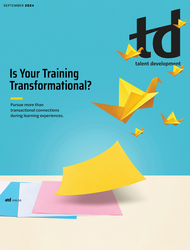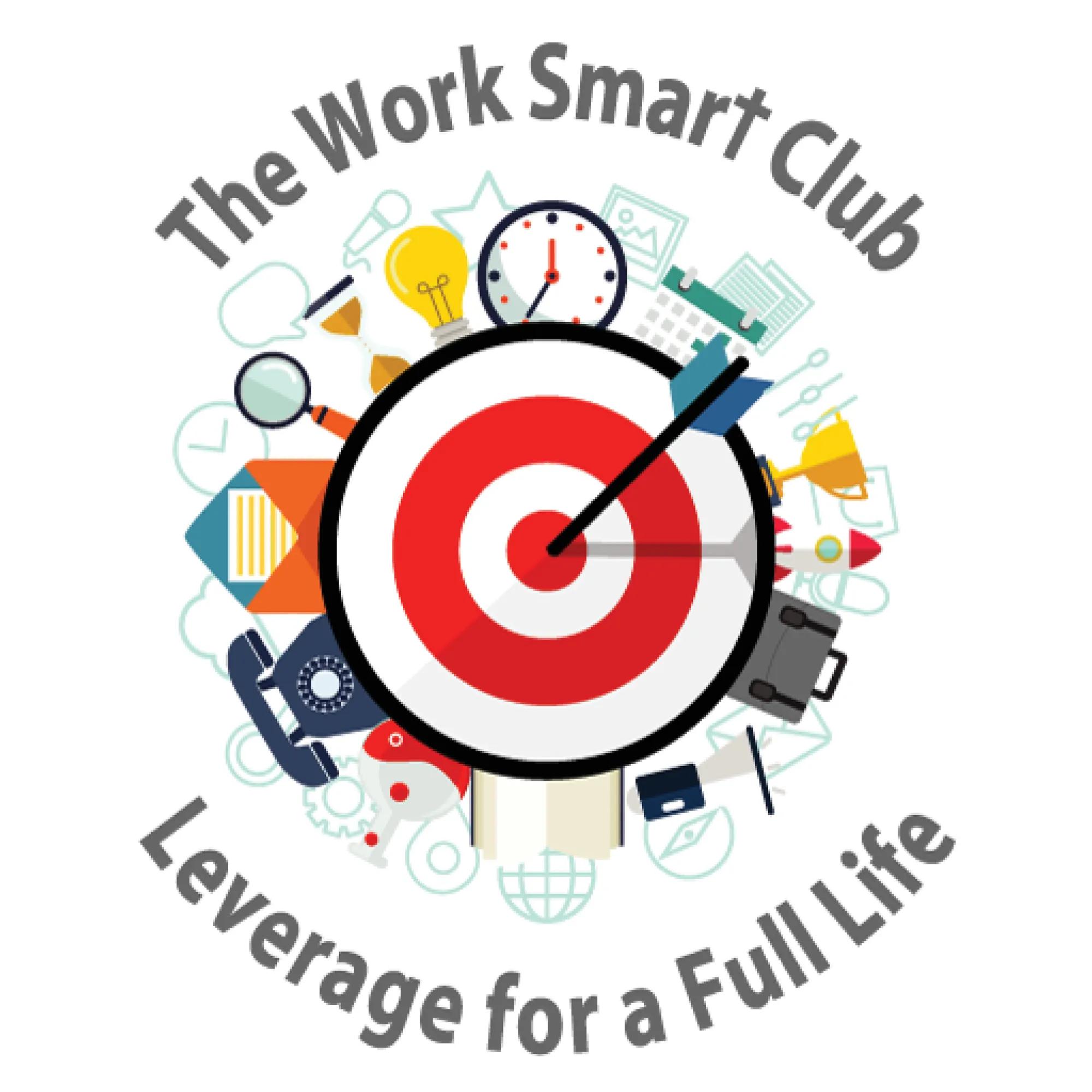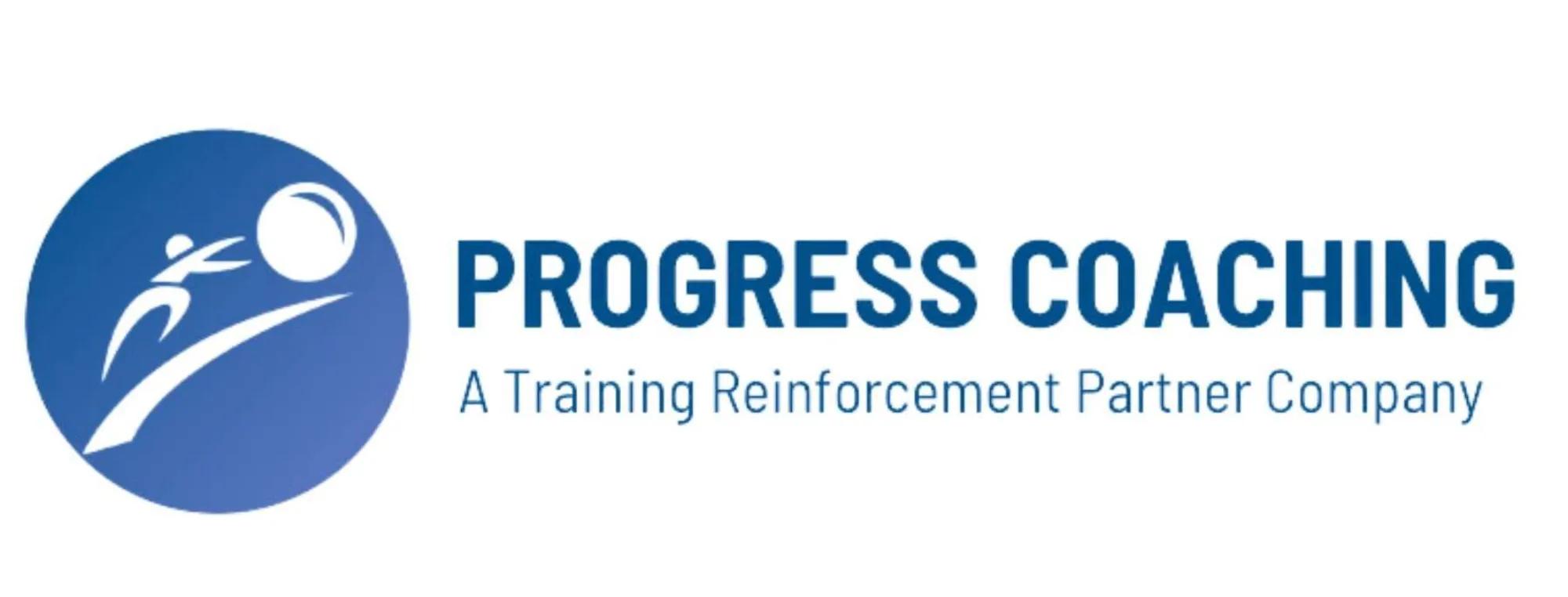TD Magazine Article
Leadership & Coaching, September 2024
In the workplace, leaders who coach their direct reports set up their teams—and organizations—for success.
Published Sun Sep 01 2024
According to Merriam-Webster, the verb form of coach means "to train intensively (as by instruction and demonstration)." In the workplace, leaders who coach their direct reports set up their teams—and organizations—for success. The vendors in this section explain how leaders can best approach their role as coach.
The world continues to shift and accelerate. That means learning needs to accelerate. On-the-job learning is an ideal way to grow teams.
Coaching promotes on-the-job learning and is a tool leaders can use to help their teams learn fast and apply that learning to what they are doing. The following dimensions break it down:
1. Define the problem.
2. Process change.
3. Engage.
Defining a problem requires clarity and an open mind. When pressed, leaders jump to solutions on issues that are grabbing their attention but are not the real problem. That increases work and offers little satisfaction. To effectively define the problem, leaders need skills such as root cause analysis and other problem-solving tools.
The second set of skills, process change, is the ability to reflect and learn from the process. Adults learn through reflection. That enables faster iteration, which moves the team closer to its targets.
Engage is the set of skills that includes curiosity, asking questions, actively listening, and empathy. They are relationship-building skills that equip leaders to provide constructive feedback to their teams.
Those three dimensions represent a set of skills leaders can learn to accelerate their teams' growth and success.
Most leaders understand that coaching is a pivotal tool. However, the act of coaching is often seen as a formal event requiring scheduled time and, therefore, can only take place under specific circumstances. What's more, research shows that when managers explain why they aren't coaching, the most common refrain is: "I'm too busy doing all the other things I have to do." But it doesn't have to be that way—nor should it be.
The notion of coaching conversations is killing performance. By viewing coaching as something that happens only in designated conversations, we lose the opportunity to harness the power of coaching in all our other conversations. The best leaders don't wait to have a formal conversation to start coaching. They use every conversation as an opportunity to coach. The key is a mindset shift.
Managers who coach believe that every conversation matters, and effective coaching can and should take place in the quick, spontaneous conversations that happen every day. They believe that everyone has the potential to learn and grow. Those core beliefs drive them to coach in every conversation—transforming coaching from a thing we do to the way we do things. That approach helps foster a culture of coaching.
With the emergence of artificial intelligence, organizations can now quickly analyze vast amounts of employee data. Managers find themselves with a new opportunity to use these unprecedented data-driven insights to enhance their coaching and mentoring of employees.
Here are four ways managers can transform the coaching process using data-driven insights:
Listening. Actively listen to your employees to understand their concerns, aspirations, and feedback. Use data to inform the conversations so that as you coach, you're basing your input on real-world data.
Powerful questions. Data insights provide managers with the knowledge of areas they should focus on when talking with an employee. That leads to managers asking insightful questions that encourage employees to think critically and explore new perspectives.
Challenge and support. Employees want and expect managers to be authentic and truthful. Data insights provide managers with the facts that allow them to do just that. Managers can better provide a balanced approach of challenging employees to grow while offering the necessary support.
Accountability. Hold employees accountable for their goals and performance. Use data insights to set clear expectations, track progress, and provide constructive feedback, ensuring that employees stay on track and are motivated to achieve their objectives.
In 2024, the coaching landscape has changed dramatically, largely due to technological advances, changing societal expectations, and increased awareness of workplace engagement. This article explores the current state and challenges of coaching in various domains.
AI Evolution and Integration
Technology will play a key role in 2024 when it comes to coaching. Virtual coaching platforms are now widely available, allowing clients and coaches to communicate regardless of geographic barriers. The platforms are often driven by artificial intelligence, providing personalized feedback and tracking progress. Organizations and their leaders now have more choices when it comes to coaching, which will lead to a new evolution in coaching: blended coaching.
Blended Coaching Is Here
Coaching is no longer simply AI on one endeavor. Rather, coaching has evolved into many solutions for organizations and their leaders. Blended coaching will now be the new strategy when it comes to workplace coaching, encompassing AI to automation to group coaching to peer-to-peer coaching. Coaching has transitioned from leaders saying they don't have time to now seeing the value of spending the time to coach. Coaching is no longer a singular task—it has evolved into a strategy that requires strategy.
Leveraging coaching skills as a leader is not just a feel-good approach; it is backed by compelling data that demonstrates the impact coaching can have. According to a Gallup study, employees who receive regular feedback and coaching from their leader are nearly three times more likely to be engaged than those who do not. And engaged employees are more productive, innovative, and committed to their work.
That said, there are clear differences between being a coach and a leader. Because ultimately, a leader needs to set clear expectations and provide their team members with direction. Because ultimately, a leader is accountable for the performance of their employees.
If there was only one thing a leader could do to be more "coach-like," it would be this: Be curious first, critical second.
Ask more questions than you think possible. Ask questions not just to understand, but for your team member to feel heard. Ask what questions, not why questions.
As leaders, it's easy to take charge and provide targeted feedback. And that's great. But lead with questions to help people process and learn. Lead with questions to build connection. Lead with questions to build capacity.
You've Reached ATD Member-only Content
Become an ATD member to continue
Already a member?Sign In






